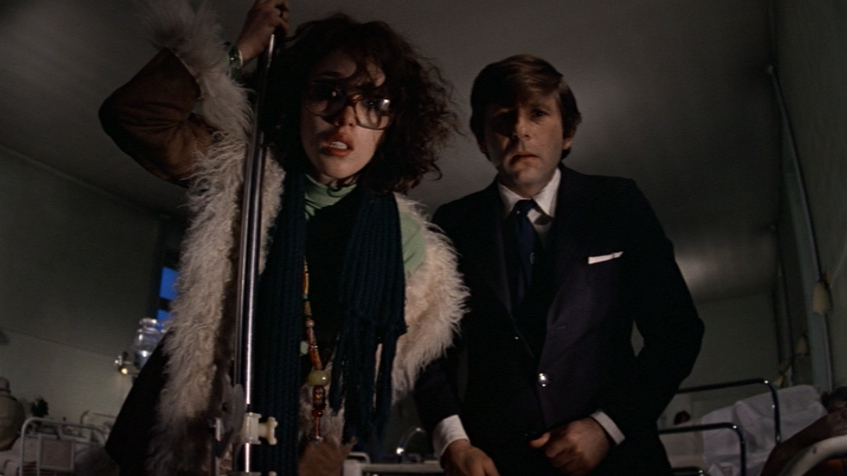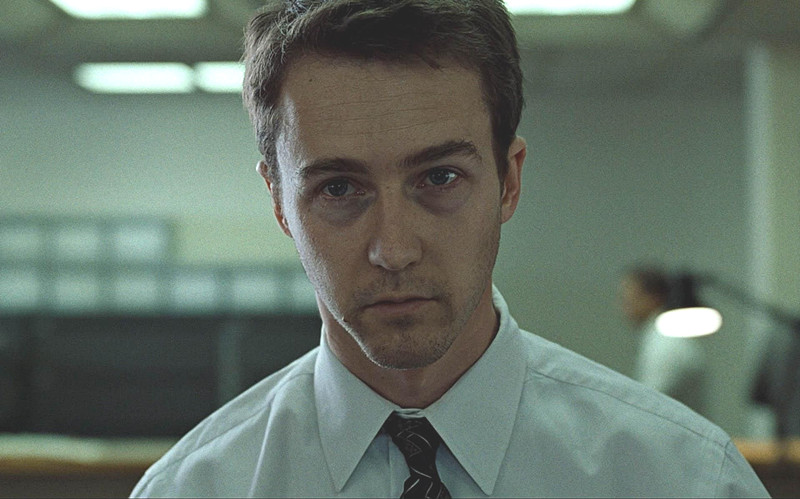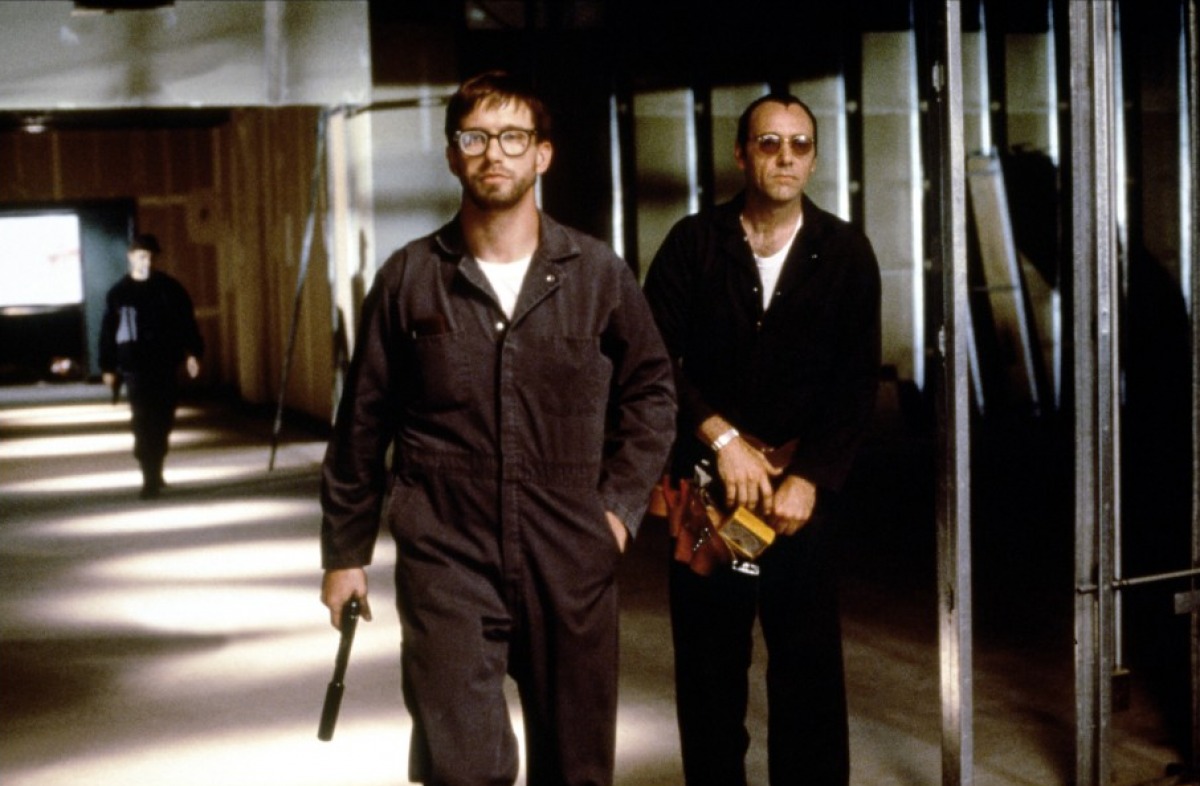5. The Tenant (1976)

Though lesser-known than his masterpieces Rosemary’s Baby, The Pianist or Chinatown, this mysterious film by Roman Polánski is often claimed to be his most personal work as it reflects his Jewish experiences with discrimination and alienation in a very subtle but intense way.
Starring Polánski himself, The Tenant tells the story of the inconspicuous man Trelkovsky who believes that he’s the victim of a conspiracy of his neighbours. Bit by bit, he descends into madness, paranoia and alienation.
The most important element of unreliable narration in this atmospheric film is the camera that steadily moves between neutral and objective perception. So, as long as the viewer sees the action through the eyes of Trelkovsky, his paranoia and his fear of his neighbours seem reasonable.
But as soon as the viewpoint shifts to neutral perception, the camera perspective is doubled retroactively and shows that there is actually nothing unusual in the neighbours‘ behaviour towards Trelkovsky.
The corrective perspective of the camera now demonstrates that Trelkovsky’s perception has been unreliable all the time as he is suffering from delusion.
4. Memento (2000)

Memento is probably the ultimate film of unreliable narration. Christoper Nolan’s stroke of genius features basically all it takes to leave the viewer utterly confused.
The story is not only told from the viewpoint of an instable narrator who suffers from anterograde amnesia, it also uses multiple storylines that follow different chronological orders and include narrative-bound colour dramaturgy.
One storyline is shown in reverse and uses coloured sequences, the sequences that follow the “right“ chronological order are shown in black and white. At some points the two storylines are interrupted by a hyponarrative and in the end they unite.
However, once the complex structure is unraveled, it’s pretty interesting to have a closer look at the different elements the film uses in order to support its unreliable narrative. An elaborate system of diegetic media consisting of polaroids, notes and tattoos help the main character Shelby to master his everyday life and to find the murderer of his wife.
As he cannot save memories for more than just a few minutes, he writes down everything that could be useful to him or sometimes even lifesaving. Instructions and warnings like “PHOTOGRAPH FRIEND / FOE“, “CAMERA DOESN’T LIE“ or “MEMORY IS TREACHERY“ are written all over his body.
By focusing on those self-made mnemonic devices, the plot is strongly filtered through Shelby’s perception. Thus, it becomes more and more difficult for the audience to classify the plot, the different characters and their motives.
With all that, Memento radically deconstructs classical filmic narration.
3. Fight Club (1999)

Fight Club tells the story of a nameless narrator who suffers from a dissociative identity disorder. In order to escape from his boring, monotonous life, he creates an alter ego called Tyler Durden.
Tyler seems to be some kind of Übermensch á la Nietzsche. He’s everything the protagonist is not: Smart, clever, wild. But as the split personality is not revealed until the mind-blowing plot twist at the end of the film, the audience keeps on acting on the assumption that the two men are two different individuals.
Nevertheless, the film gives us several signs of unreliable narration from the very beginning on. Alone the namelessness of the protagonist suggests a lack of identity. Also, his suffering from insomnia might lead to a hindered perception of reality. Self-reflectively, the narrator tells us: “With insomnia, nothing is real.
Everything is far away. Everything is just a copy of a copy of a copy.“ Furthermore, by taking part at meetings of diverse support groups in a parasitical manner, he proofs us that self-deception and hypocrisy are part of his personality.
But then, on the other hand, when it comes to his perception of his alter ego, the protagonist seems to give the audience subliminal signs for his dual identity, as statements like “I know this because Tyler knows this.“, “I already knew the story before he told it to me.“ or “Sometimes Tyler spoke for me.“ suggest.
Beside these narrator-bound clues, also the film itself tries to point out the unreliability of the narration to the audience by superimposing subliminal pictures of Tyler Durden before the protagonist even “meets“ him. Yet, those pictures do not surface within our normal visual level of perception but can only be seen if the film is replayed at a lower speed.
2. The Usual Suspects (1995)

“The greatest trick the devil ever pulled was convincing the world he doesn’t exist. And like that – he’s gone.“
Bryan Singer couldn’t have found a more suitable quote to end the film that has left so many viewers astounded for its memorable plot twist and unreliable narration.
The Usual Suspects follows the interrogation of a disabled, criminal con-artist called Roger ‘Verbal‘ Klint who‘s one of the only two survivors of an explosion on a ship which killed most of Verbal’s partners in crime. Interrogated nonofficially by an U.S. special agent, Verbal’s story slowly unfolds in flashbacks.
In order to help the interrogating cop with his investigation, he tells him about the job that resulted in the explosion on the ship. And he blames a man named Keyser Soze for being the mastermind behind everything.
The shocking plot twist reveals that Verbal is actually Keyser Soze and that everything he told the cops was a big lie, pieced together from details Verbal observed in the cop’s office. When walking out of the police station as a free man, we can see that even his cerebral palsy was faked. And like that – he’s gone.
All this makes Verbal probably the most ruthless unreliable narrator in this list.
1. Rashomon (1950)

Although most people have never heard of the ‘Rashomon effect‘, nearly everybody knows what’s meant by it. It’s a psychological term that deals with the subjectivity of perception recollection and basically describes the effect of different people giving contradictory interpretations of the same event.
The term actually derives from the Japanese film Rashomon from 1950 and the effect is since then a crucial element of unreliable narration in popular art forms.
The film Rashomon tells the story of the death of a samurai by using multiple narrators. Four different people claim to have witnessed the death of the samurai. But although they describe basically the same event, their reports differ a lot in the details regarding the motivation behind the samurai’s death and the killing itself.
Also, they somehow all claim to be responsible. As not all four witnesses (one is actually the samurai himself speaking through a medium) could have been responsible for the tragedy, several questions are raised: Who tells the truth? What motivates at least two of the witnesses to claim to be guilty? Is there even a definite truth? Or is truth subjective?
Author Bio: Vanessa Beck recently graduated at the University of Frankfurt am Main, Germany and holds a B.A. in Film- and Media studies and in business studies. She’s currently travelling around the world and is always looking for new cinematic inspirations and other cinephiles to share her passion with.